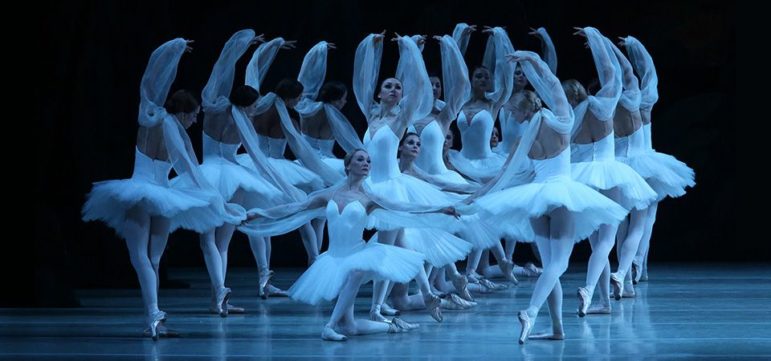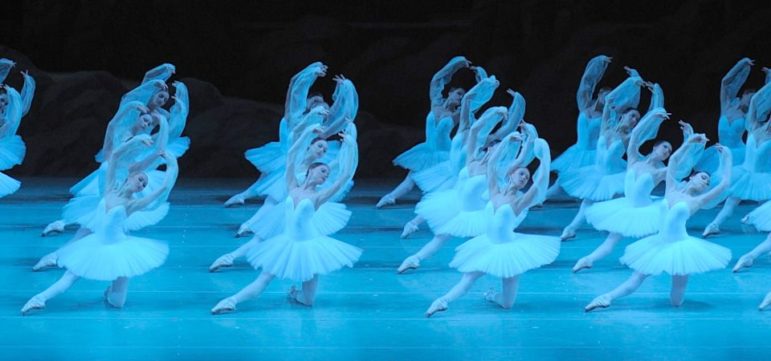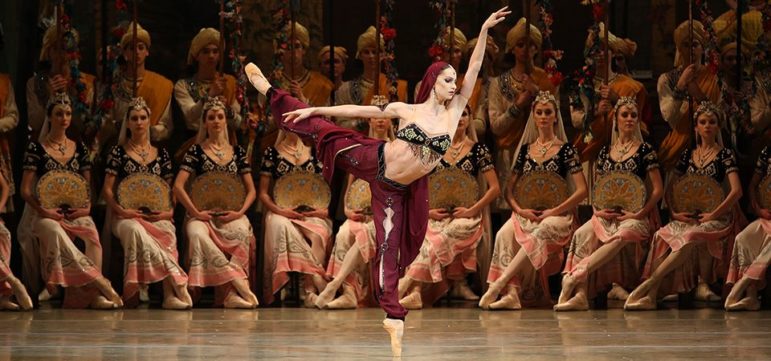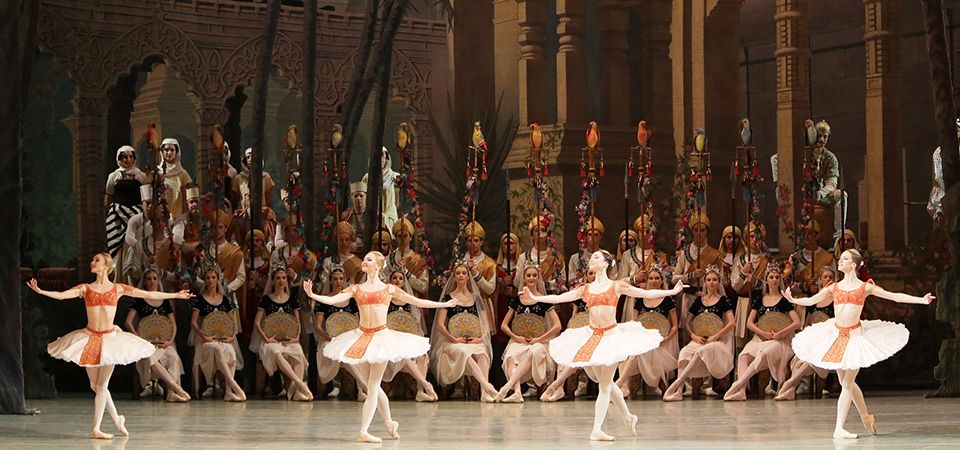Two steps and an arabesque, a position in which a ballet dancer standing on one leg lifts the other leg high behind the torso. Who would have known the simple action, repeated in unison by dozens of women in white tutus, could be so magical, poignant, and breathtakingly beautiful?
French choreographer Marius Petipa knew when he crafted the famed Kingdom of the Shades scene in 1877, and so, too, will a modern audience when Saint Petersburg’s Mariinsky Ballet in La Bayadère graces the stage at Zellerbach Hall from Oct. 30 through Nov 3. Cal Performances’ rare presentation of the three-hour ballet leaves no doubt of Petipa’s genius. The ballet’s iconic status leads fans and many historians and scholars to say it is his masterwork. With music by Ludwig Minkus performed live by the company’s orchestra, vibrant costumes, plush sets and dramatic lighting, the dancers’ brilliant technique and nuanced pantomime bring full luster to the 142-year-old Russian ballet Petipa created to showcase his favorite ballerina, Yekaterina Vazem.

The libretto by Petipa and Sergei Khudekov is told in three acts. Set in ancient India but through a decidedly European lens, there is no reference to traditional Indian dance or music. The tender story of love between the warrior Solor and bayadère Nikiya (bayadères performed ritual temple dances) swiftly flares into a tale of envy and betrayal. The High Brahmin, leader of the temple, loves Nikiya despite his vows of celibacy. The Rajah’s daughter, Gamzatti, has since birth been betrothed to Solor. Their grand wedding is being planned. When the Rajah learns from the High Brahmin of the love pledge between Solor and Nikiya, he orders the bayadère put to death. Tragically, it is not the outcome desired by the High Brahmin, who shared the secret expecting the Rajah would order the execution of Solor, thus eliminating his competition.

Gamzatti gains knowledge of the affair and to prevent her rival from destroying the marriage plans, hides a poisonous snake in a flower basket Nikiya carries during a dance she has promised to perform at the royal couple’s wedding. Bitten by the serpent, refusing an antidote and welcoming death rather than life without Solor, she dies. In the ballet’s dreamlike, otherworldly Act III, after the temple and its occupants are destroyed by the gods, only spirits prevail. Solor and Nikiya are reunited in the afterlife, forever bonding in eternal love.

The pleasures, beyond the ballet’s cathartic tragedy and passionate expressions of devotion and destruction, come from its sheer physicality. In solos, pas de deux, trios, small and grand divertissements and rigorous corps de ballet sections, there are soaring double cabrioles, whirling coupé jetés en menage (in a circle), double attitude turns, sumptuous adagio extensions, pirouettes in abundance, and oh yes, those marvelous arabesques cascading across and filling the stage. If for no other reason than the restorative power of witnessing the roughly seven-minutes-long Kingdom of the Shades, La Bayadère is a ballet worth seeing.
